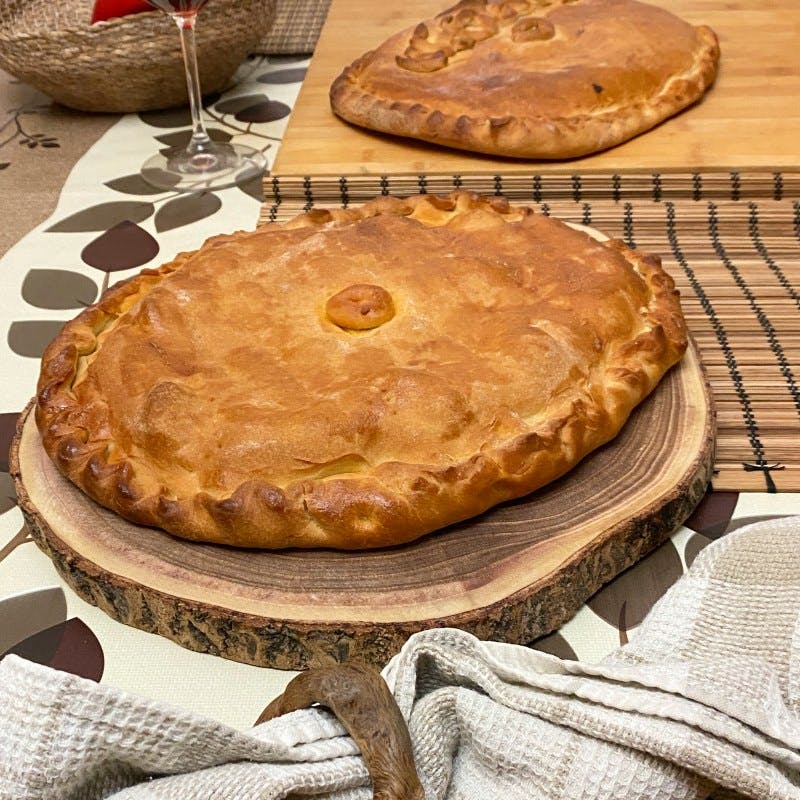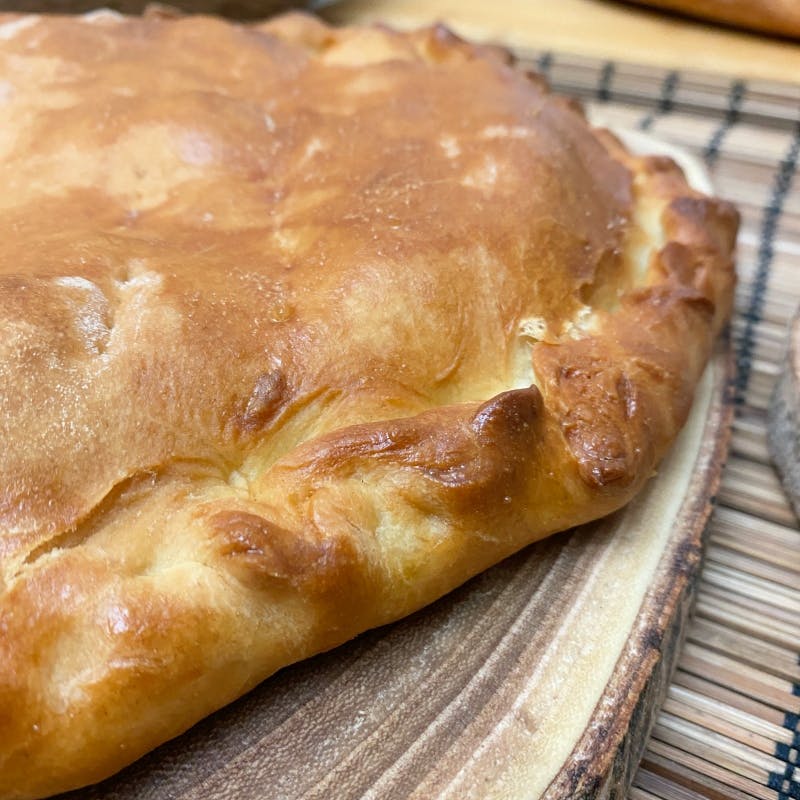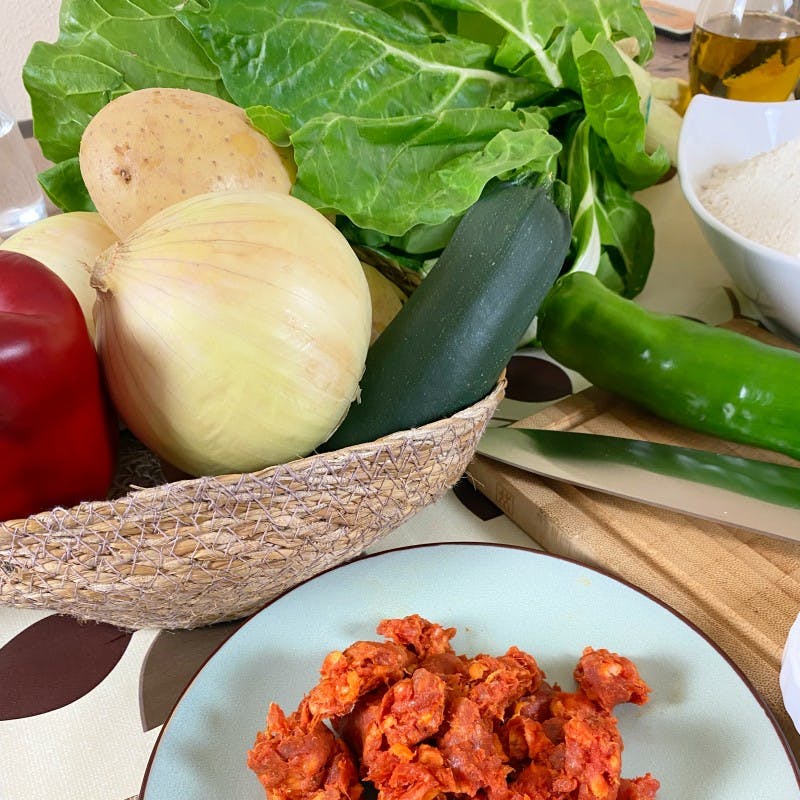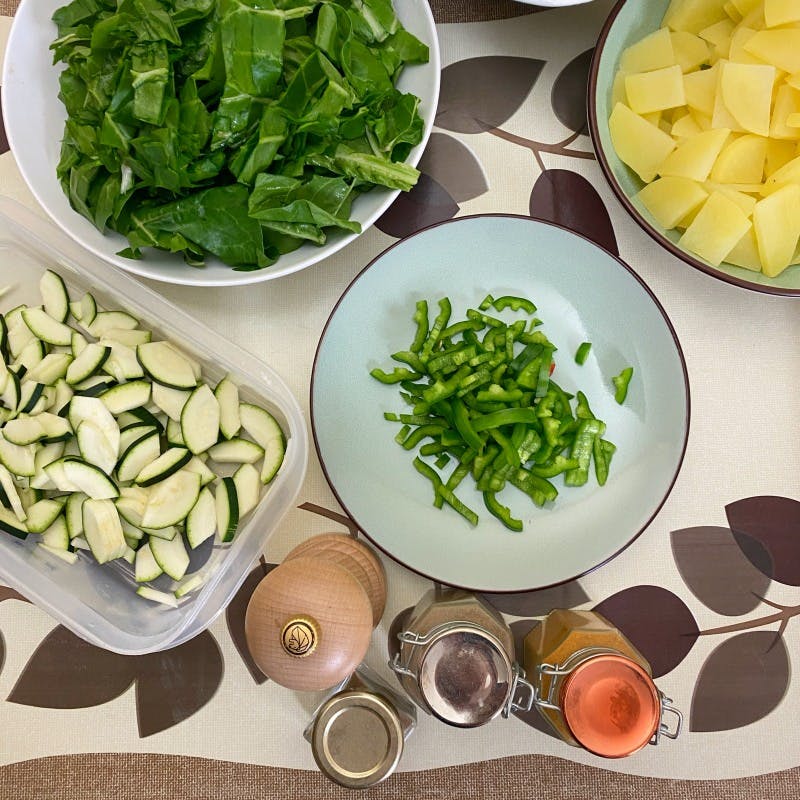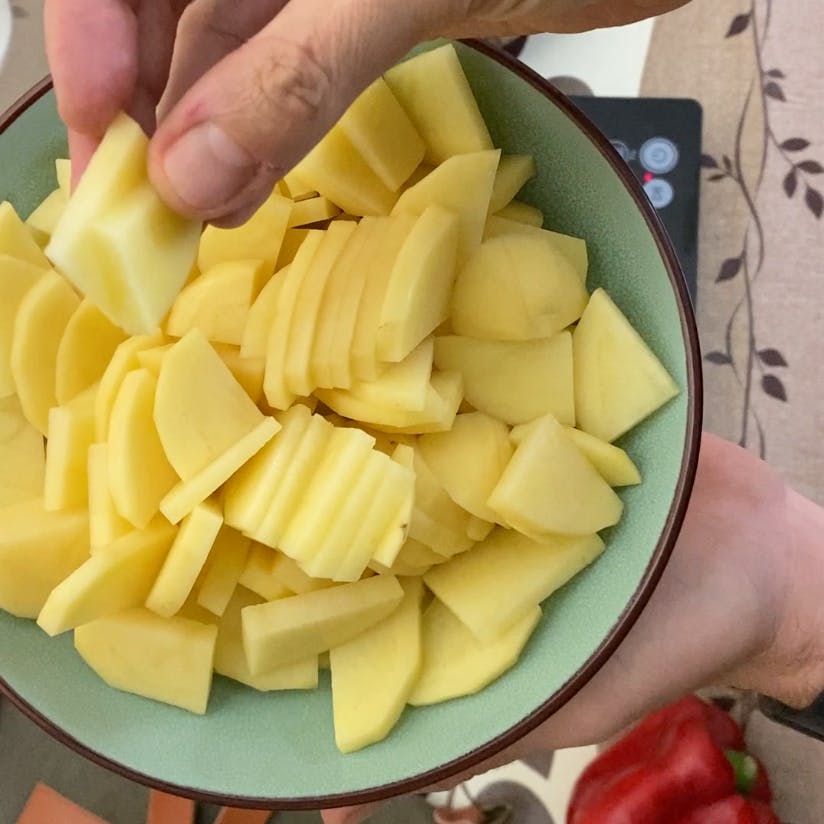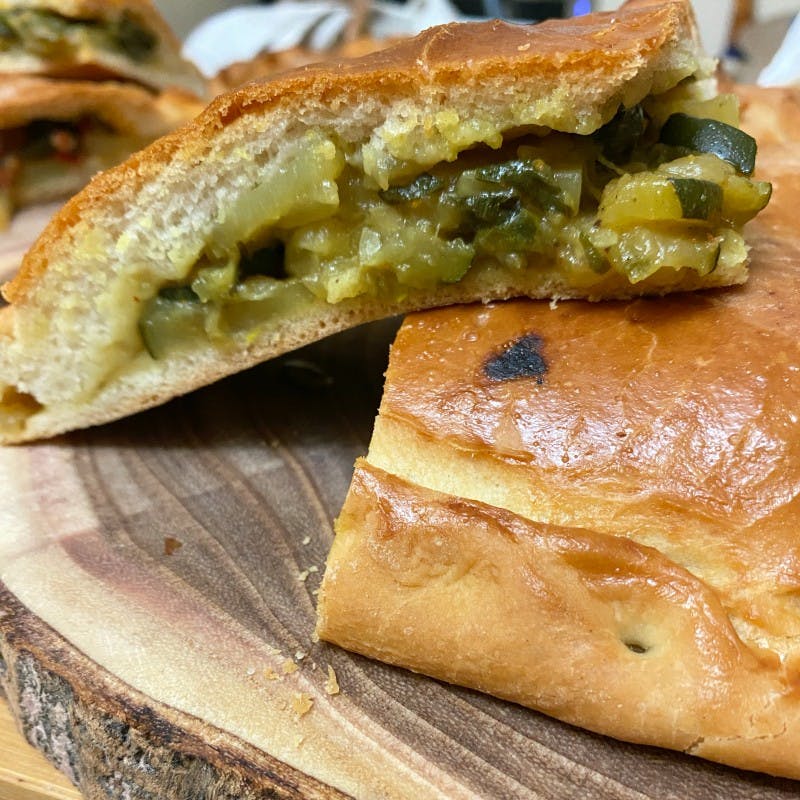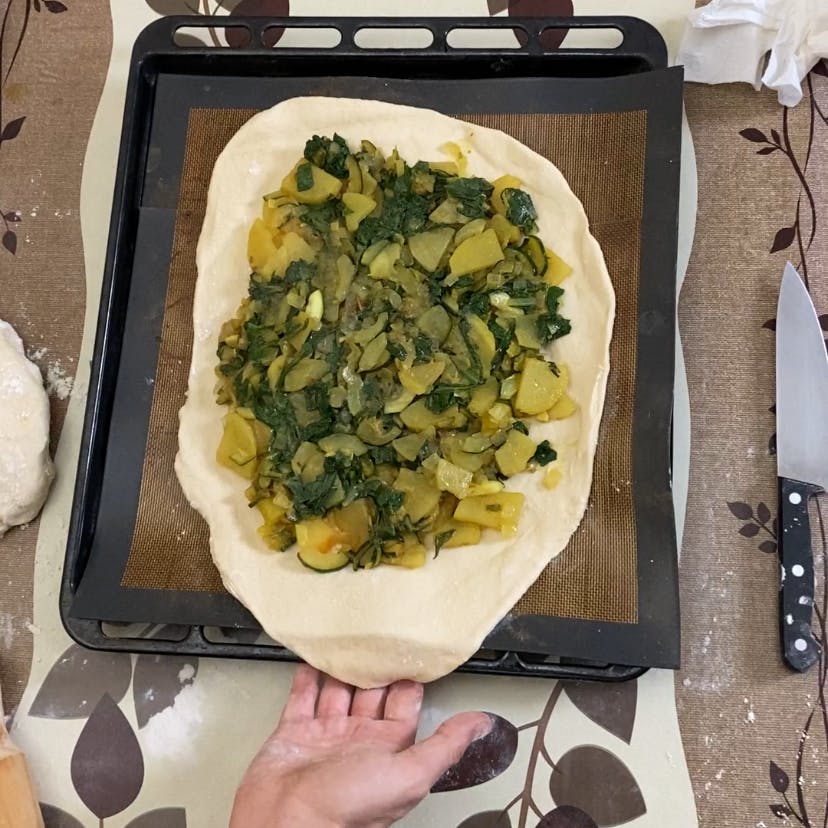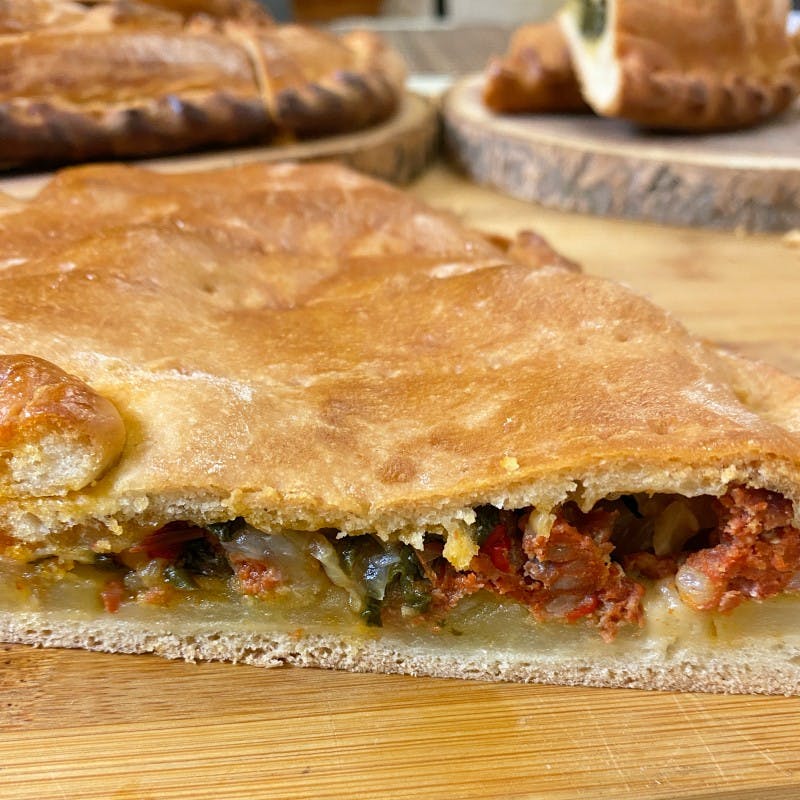Learn how to make the traditional Spanish Pie "Empanada"
This week I return to the north of Spain to bring you another of its star recipes. This traditional dish, with countless versions, has been modified over time depending on each country's and region's typical products until it became what it is today.
Spain has two regions very famous for their empanadas: Galicia and El Bierzo. Two beautiful neighbouring areas with very similar cultures and empanadas. The big difference is that the pie from El Bierzo always has potatoes and chard in the filling.
Well, today, I bring you a couple of versions of the Empanada Berciana. First, I prepared the classic "Empanada de Carne" using a meat filling and trying to emulate the empanada flavours that my grandmother used to do it. The meat used traditionally to make this empanada was left over from making chorizo on the day of the pig slaughter.
And the second one is " Empanada Vegetariana " with a filling which I have given a delicious Indian touch. I am sure you will like them.
But before we get into the kitchen, I want to show this Spanish speciality's possible origins.
Origins of the empanada
Its origins are pretty uncertain, as the oldest data on this preparation dates back several centuries before Christ.
However, some sources say "Los Suevos", an old barbarian village from the north of Europe in the 4th century, were the empanada's precursors in the Spanish area.
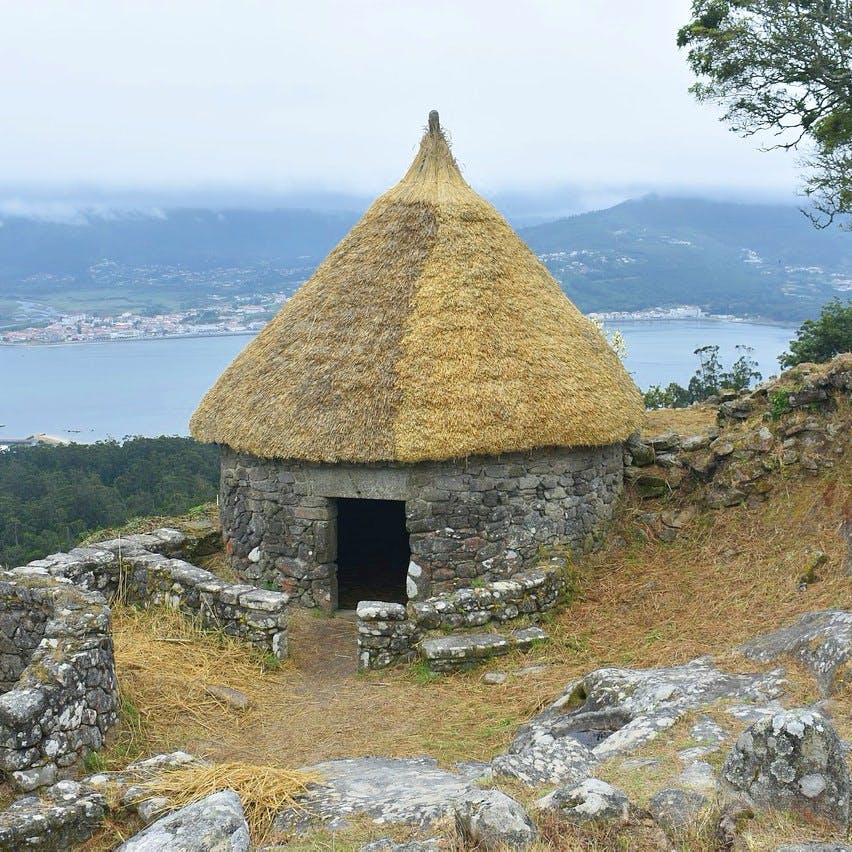
Another theory about the first empanadas similar to the ones we know today in Spain dates back to the Arab invasions in the 8th century. They prepared a kind of empanada with lamb meat, bulgur and spices called "esfiha" or "fatay".
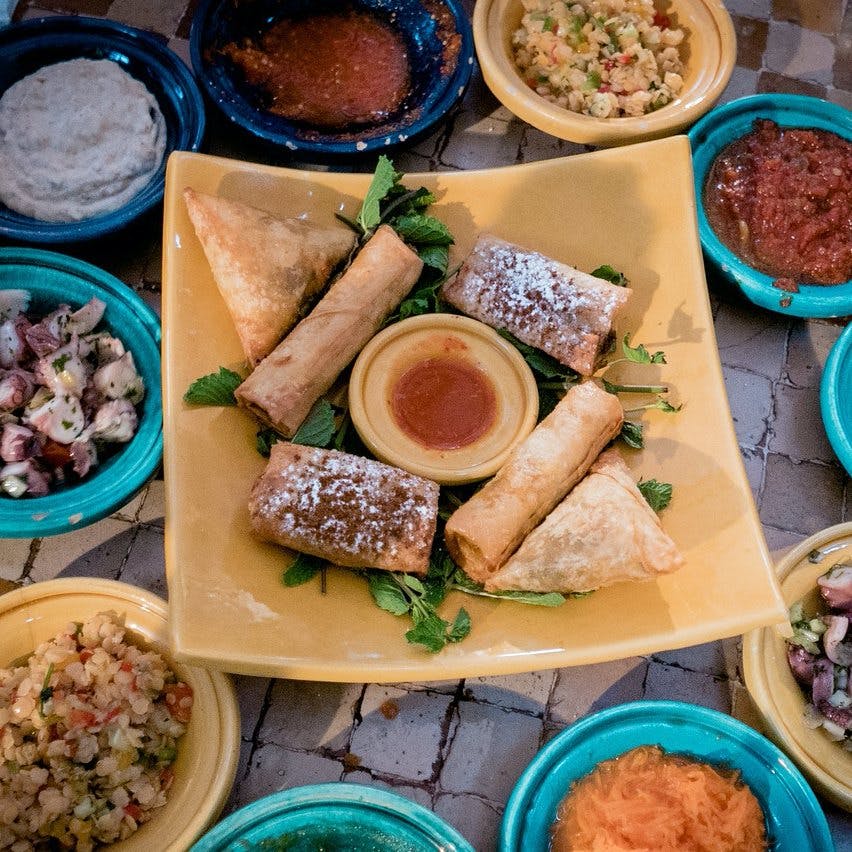
Despite its many origins, this delicious and humble dish probably originated in the mountains, where shepherds and travellers carried bread with food. The bread dough was cooked with the stuffing to preserve the meat better, evolving to prepare special dough to wrap the filling.
Empanada Recipe
- Preparation time 60 min
- Cooking time 40 min
- Total time 100 min
Ingredients 12 serves
For the dough
I have prepared two empanadas for approximately six people with these measures.
- 1Kg / 2,2 lb / 35 oz flour
- 200 ml / 0,8 cups olive oil
- 30 g / 1 oz salt
- 30 g / 1 oz fresh yeast
- 420 ml / 1,75 cups water
For the meat stuffing
- 240 g / 1/2 lb/ 8,5 oz potatoes
- 400 g / 0,8 lb / 14 oz onion
- 3 cloves garlic
- 120 g / 1/4 lb /4,2 oz red pepper
- 100 g / 0,2 lb / 3,5 oz green pepper
- 150 g / 0,3 lb / 5,3 oz chard
- 350 g / 0,8 lb / 12,3 oz marinated pork meat (chorizo type)
- 4 tablespoons of extra virgin olive oil
- Salt to taste
For the Vegetarian Stuffing
- 240 g / 1/2 lb / 8,5 oz potatos
- 400 g / 0,8 lb / 14 oz onion
- 3 cloves of garlic
- 120 g / 1/4 lb / 4,2 oz green pepper
- 200 g / 0,4 lb / 7 oz chard
- 200 g / 0,4 lb / 7 oz courgette
- Salt
- 1 teaspoon of cumin
- 1 teaspoon of turmeric
- 1 teaspoon of Ginger powder
- 1/2 teaspoon of black pepper
- 1 cayenne (optional)
- 4 tablespoons of extra virgin olive oil
Method
Firstly we start by making the empanadas filling. We can even prepare it a day in advance or use leftovers from another dish from the previous day, such as a stew or casserole.
For the Meat filling
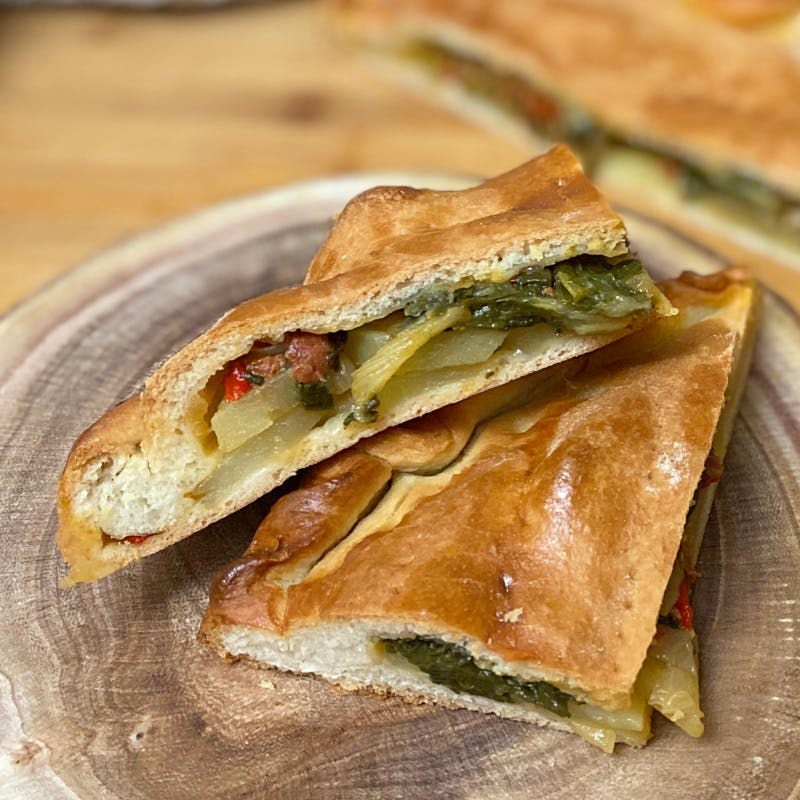
- Pour the olive oil into a saucepan or pot and place it over medium heat. Then add the onion, garlic and a pinch of salt and cook for about 5 minutes.
- Add the green and red pepper and continue cooking for another 5 minutes until the vegetables start to colour.
- Add the marinated meat and mix well. Cook for another 5 minutes until the meat starts to release its fat.

- Finally, add the chopped chard and a little salt and cook for another 5 minutes.
- Remove from the heat and drain the meat filling to remove excess liquid. This could make the base of the empanada crust crumbly.
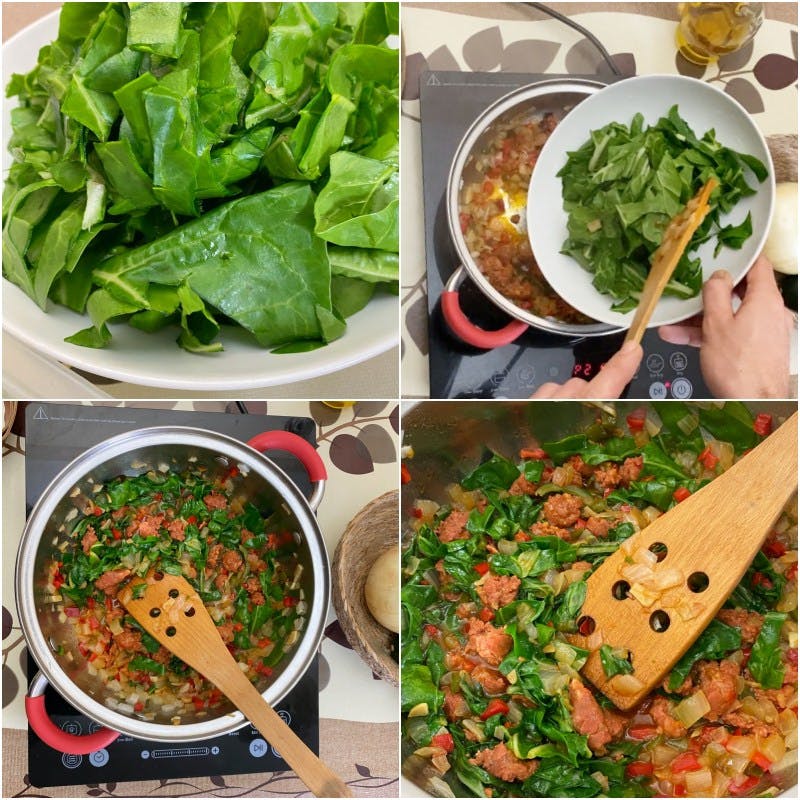
- On the other hand, also prepare the potatoes. Cut the potatoes into 1/4 slices and boil them in water for five minutes. Drain and set aside. This makes them easier to cook in the pie and prevents the potato from becoming hard.
At this point, we have the filling of our first empanada ready and let's go for the vegetarian version.
For the Vegetarian filling
- Start with the potatoes, do the same as before, slice them into quarters, boil them 5 minutes and set them aside.
- Pour the virgin olive oil into a saucepan over medium heat. Add the onion and garlic and cook for about 5 minutes. Then, add the green pepper and cook for another 5 minutes.
- Add the pre-cooked potatoes and a little salt and black pepper. Mix well and continue cooking for another 5 minutes approximately.
- Now it's time to add the courgette and the spice mix; turmeric, cumin and ginger powder. Cook over high heat, stirring continuously for a couple of minutes.
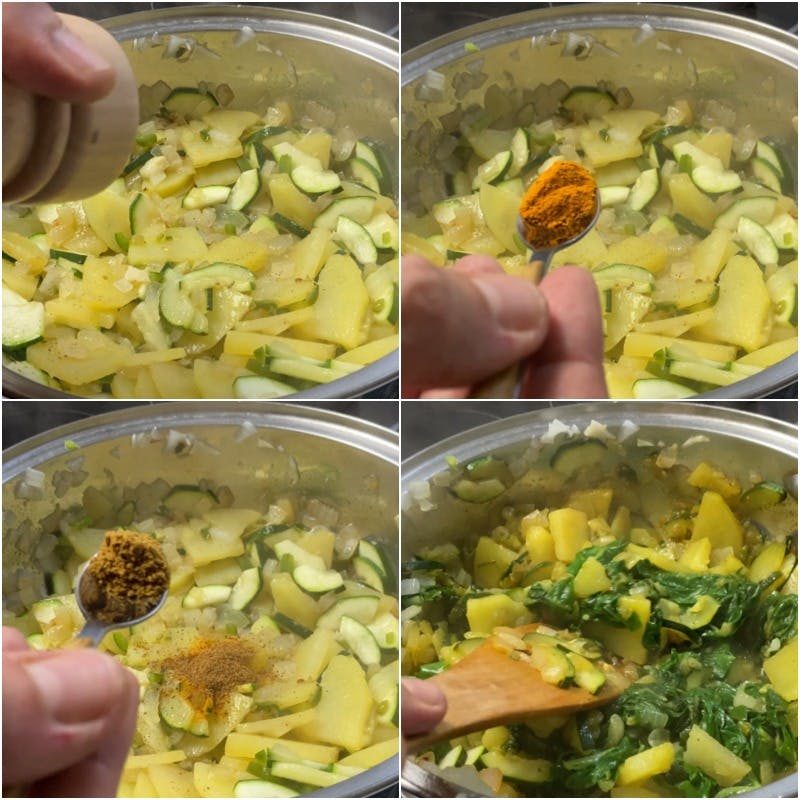
- Back to the medium fire and add the chard and a little more salt and pepper. Cook together until the chard is tender and the potato starts to break down, which will be the optimum point of stuffing.
- Remove them from the heat and drain them as we did with the other filling to discard the excess liquid.
The dough
- In a large bowl, put the fresh yeast and half of the lukewarm water to dilute it with the help of your hand or a whisk. Add the other half of the water, the salt, and the olive oil and mix well.
- Now add the sifted flour little by a little while mixing with a spatula. We will add approximately 800 g of our flour, leaving the other 200 g to work the dough later.
- When the dough starts to pull away from the edges of the bowl, it's time to start working with your hands.
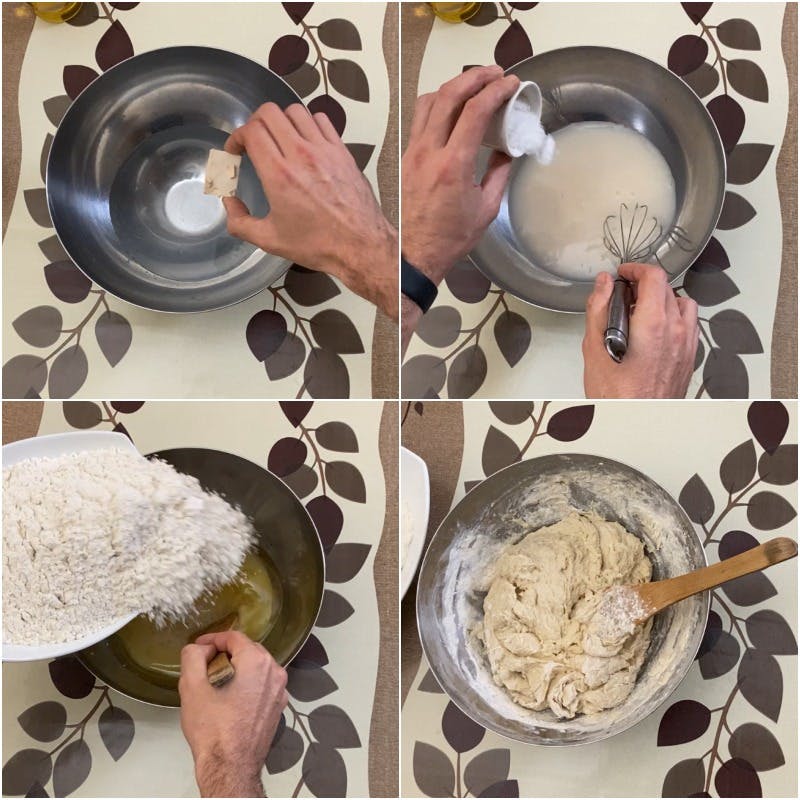
- Dust your hands and your work surface with flour to prevent the dough from sticking and to be able to knead it well.
- Take the dough out of the bowl and Knead for about 5 to 10 minutes. Gradually add as much flour as you need until the dough is firm, elastic and homogeneous.
- Then return it to the bowl and cover it with a tea towel. Let it rest in a warm place for about 30 minutes. To give you an idea, the dough will practically double in size thanks to the action of the yeast.
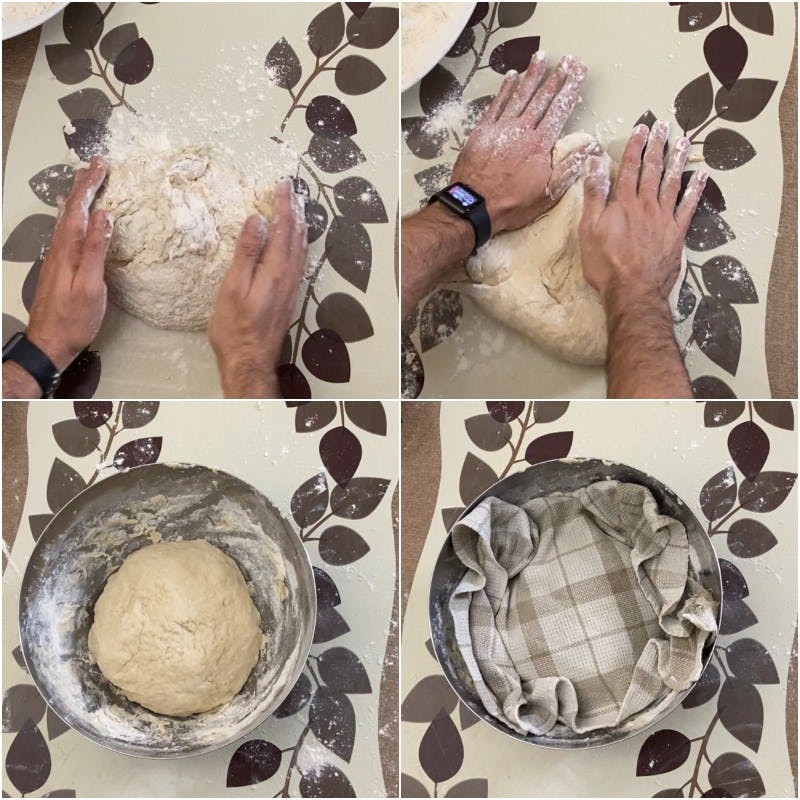
Filling and baking the empanadas
And now comes perhaps the least easy part of this recipe.
- Take the dough and cut it into two halves, each one for each empanada. Then cut one of the halves in two again, but this time one part is a little more significant than the other, which will be the base and the lid.
- We start making the meat empanada.
- Dust your work surface with flour, and with the help of a rolling pin, roll out the base of the empanada to the desired shape.
- Place it on a baking tray with kitchen paper underneath.
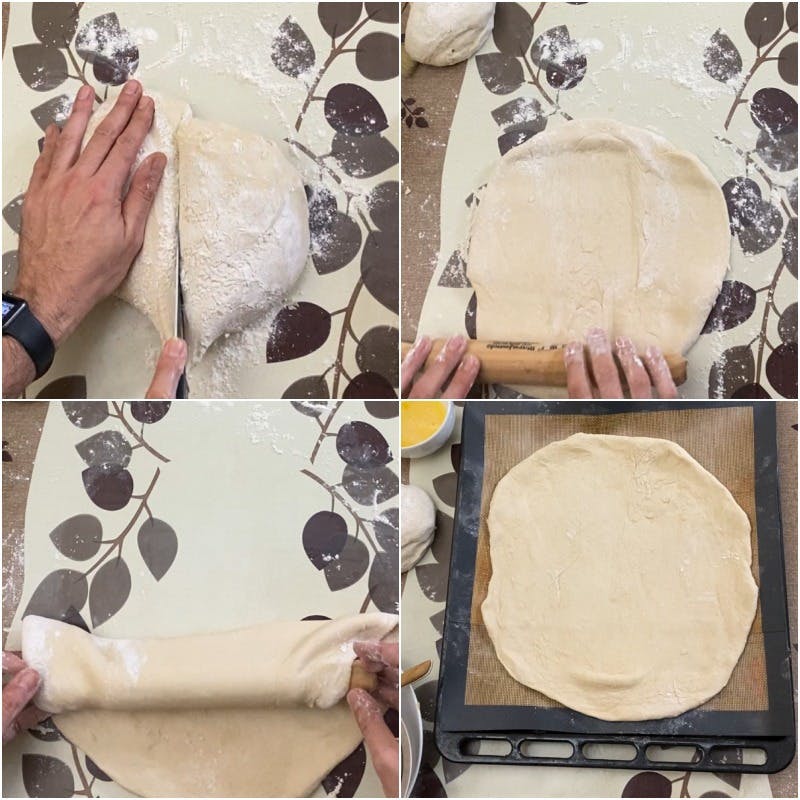
- Add the pre-cooked potatoes as a base, add a little salt and put the meat filling on top. You must leave a couple of centimetres of the dough free around the edges to close it well with the lid.
- Now roll out the other small piece of dough to make the lid and place it on top of the filling.
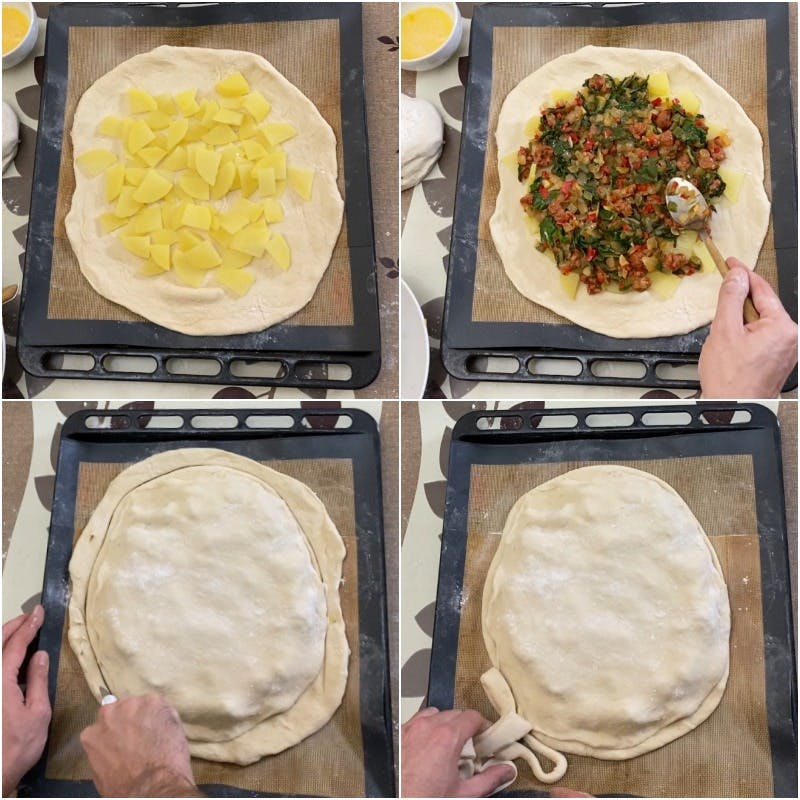
- Cut off the excess dough with scissors or a dough cutter before closing it to give it an excellent shape.
- Close the edge of the empanada with your fingers as I do, prick the lid with a fork and make a hole in the middle, called a chimney. This ensures that it doesn't swell and that it cooks perfectly.
You can also make some fun decorations with the little bit of dough always left over.
- Finally, paint the empanada with beaten egg and bake it in a preheated oven at 190 degrees for about 40 minutes.

For the vegetarian pie, we would follow the same steps for the vegetarian empanada. The only difference is that the potato is already integrated into the filling, so we can put the filling in at once.
Well, friends, I hope you dare to make this international Spanish speciality. If you follow the recipe step by step, it is much easier than it looks. And if you have any doubt, you can contact me via direct message on Facebook or Instagram. It will be a pleasure to help you.
Have a Tasty Day!

